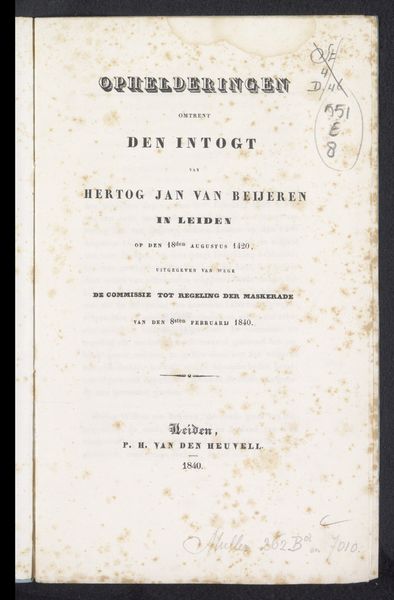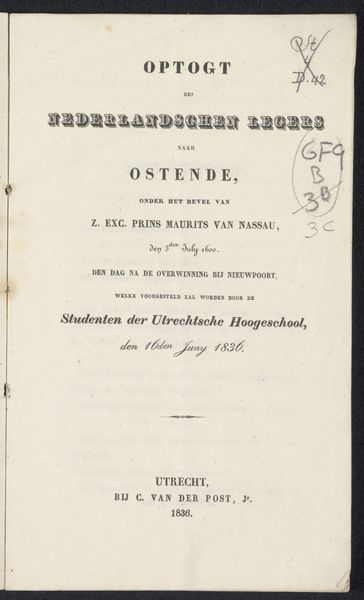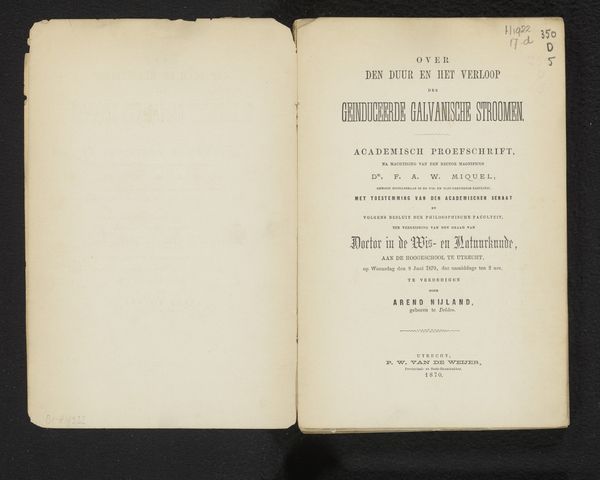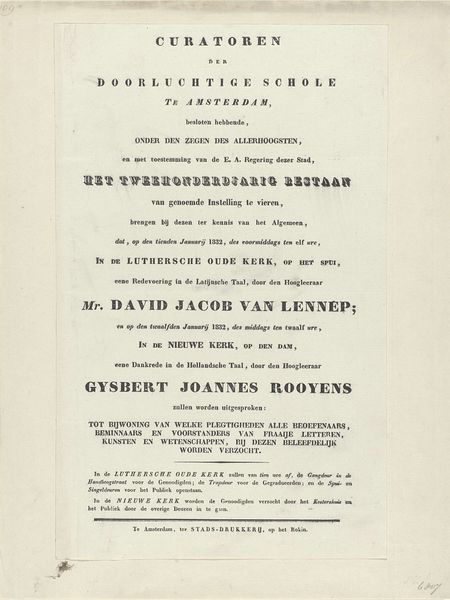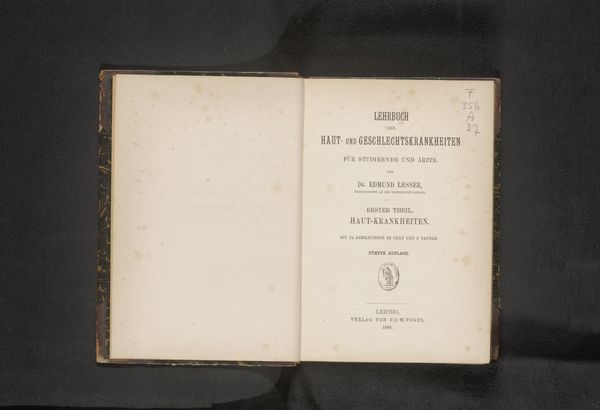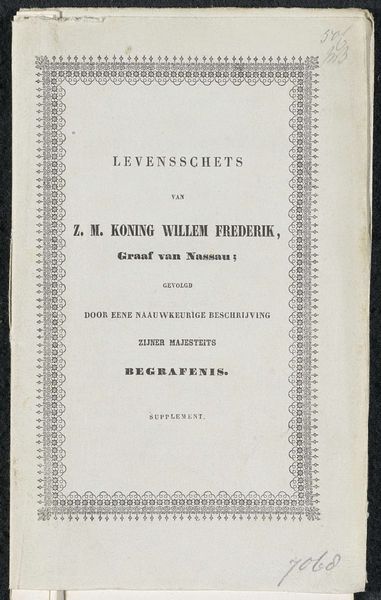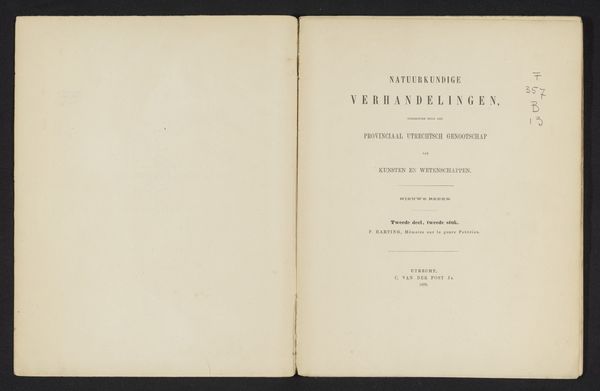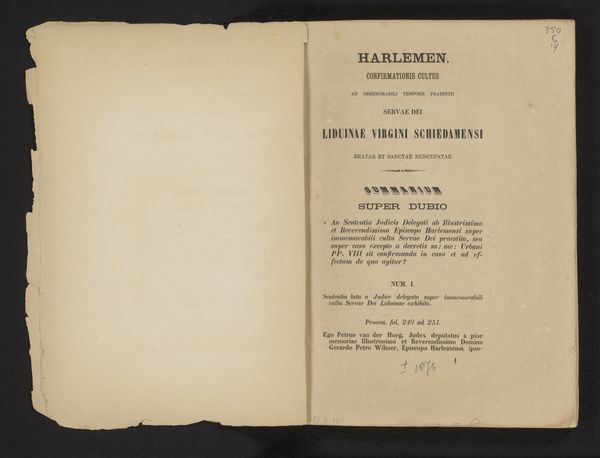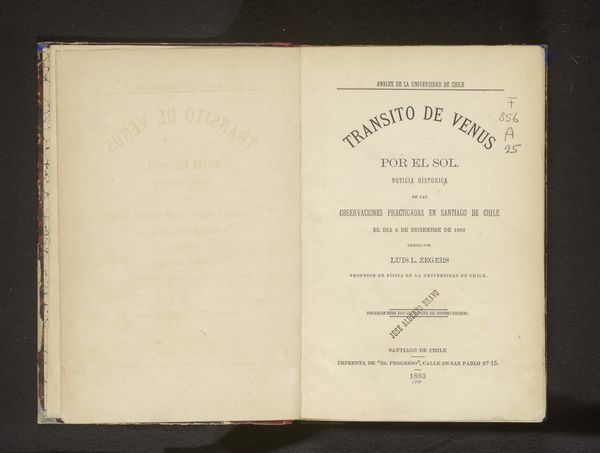
Geschiedkundig overzicht ter inlichting omtrent (...) den intogt van Hertog Jan van Beijeren binnen Leijden in 1420 1839
0:00
0:00
#
aged paper
# print
#
old engraving style
#
sketch book
#
hand drawn type
#
personal sketchbook
#
hand-drawn typeface
#
visual diary
#
sketchbook drawing
#
history-painting
#
sketchbook art
#
realism
#
historical font
Dimensions: height 235 mm, width 142 mm
Copyright: Rijks Museum: Open Domain
Curator: Oh, this piece has such a tactile history! We're looking at "Geschiedkundig overzicht ter inlichting omtrent (...) den intogt van Hertog Jan van Beijeren binnen Leijden in 1420," a print made in 1839 by J.H. Gebhard & Co. Editor: Wow, the starkness of it is striking. It feels almost like staring into an old diary page. Curator: Yes, exactly! Notice the intentional use of period typefaces to give a sense of authenticity, invoking the feeling of the illustrated broadsides circulated centuries ago. What emotions does it evoke for you? Editor: It makes me think about history as a performance. It's commemorating an event from the 1400s, printed in the 1800s, referencing how students in 1840 will represent the Duke of Bavaria. All this in a singular page about a singular parade? It almost feels recursive. Curator: The layering is definitely deliberate! Each stylistic and printing choice functions almost as a marker, speaking to both the actual historical event, as well as the ongoing cultural relevance it has centuries later, as reflected in performance and publications. It speaks to history being something that we keep reinventing and reimagining. Editor: That’s it! And this feels more… sincere than most modern-day recreations. Even just that script for the "Masquerade." Someone cared about the hand-drawn type. This reminds me of all those people dedicated to crafting a certain feeling, more than absolute authenticity. Curator: There's a real art to invoking the spirit of history, isn't there? And it seems these printers captured something resonant in their time, giving the masquerade celebrating a duke a document as considered as this print is. Editor: It makes you wonder, what's today's equivalent for our fleeting historical memory? What’s being documented in such a simple way today? Food for thought, indeed.
Comments
No comments
Be the first to comment and join the conversation on the ultimate creative platform.
